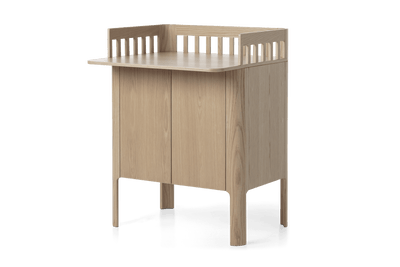What Children Learn from Drawing
Your child’s drawings are more than just scribbles on a piece of paper. They’re your child’s first written message, and the art of drawing itself comes with a lot of developmental benefits. Drawing helps your little one communicate, it sharpens their visual senses, and it sparks their creativity. Plus, when you let your child’s drawings take place on the fridge, it’s a real self-esteem-booster for your little one. So, get out all your child’s colouring pencils and let your little artist loose.
Highlights:
- When it comes to drawing, every child goes through the same stages of development.
- First, children draw rough lines and circles, then objects according to their importance.
-
Regardless of your child’s age, drawing comes with a number of developmental benefits:
- Drawing helps your child communicate feelings, ideas, dreams and wishes.
- Drawing improves your child’s sense of space and attention to detail.
- Drawing is a great way to foster your child’s self-esteem.
- Drawing lets your child experiment and develop a creative mindset.
From Doodles to Detailed Artwork
When it comes to the art of drawing, children from all over the world go through the exact same stages of development. Expert in children’s play, Joern Martin Steenhold, who has seen hundreds of children’s drawings, shares his insights:
“One and two-year-old children draw rough lines and circles. Three-year-old children start to depict objects and figures according to their importance. The child itself and Mom and Dad typically take up most space on the paper. Four-year-old artists favour the most colourful pencils in the box, and their drawings are often followed by imaginative stories. And around age five or six, children start to depict things as realistically as possible.”
Regardless of age, drawing comes with a lot of developmental benefits for your little one:
It Helps your Child Communicate
Apart from speaking, drawing is little children’s first means of communication. Equipped with crayons and paper, your child is free to communicate anything in the world: things they find fascinating, things they dream of, or feelings they might have a hard time expressing. Here, family advisor Lola Jensen has a useful parenting tip:
“Try to restrain yourself when you feel like saying ‘well, that surely looks like an airplane’, because what if it was meant as a submarine? Instead, use as few words as possible when you ask your child to explain what’s on their drawing. This way, your child becomes a storyteller, practicing the fine art of communicating.”
Drawing Sharpens your Child’s Senses
Drawing is seeing and studying objects and making conscious choices on how to depict those objects. Inspire your child to fill out the entire piece of paper with questions like “what are you going to draw next to the house?” This way, your child’s imagination is peeked, and you improve your child’s sense of space, dimensions, shapes, colours, and eye for detail.
Drawing can Boost your Child’s Self-Esteem
To see their homemade creations up on the refrigerator makes little children so incredibly proud. So, go ahead and make a little showcase of your child’s colourful drawings. When you show your little one how much you appreciate their artistic contribution to the family community, you boost your child’s self-esteem.
It Sparks your Child’s Creativity
Your child’s drawing is a work of art. But really, it’s not so much the drawing itself as the creative process of making the drawing that really entertains your child. Little children love to experiment with connecting dots and lines and mixing colours, and they think less about the finished product. With things like your child’s collection of shells and stones or even recycled packaging, you only increase the fun.
Encourage your child to experiment and be creative all they want. Afterall, some of our most beloved artists are the ones who have managed to preserve their amazing and creative childlike brains.
Meet our Team of Experts
One expert is an experienced family advisor who has met hundreds of Danish families. Another expert has dedicated his entire life to researching children's well-being and development through play. And some of the other experts specialise in children's motor skills, sensory integration, and learning. Together, they inspire us to provide your children with better sleep, develop them through play, and support them when they study.
At FLEXA Insight, you will find all the experts’ valuable insights, tips, and ideas.




























